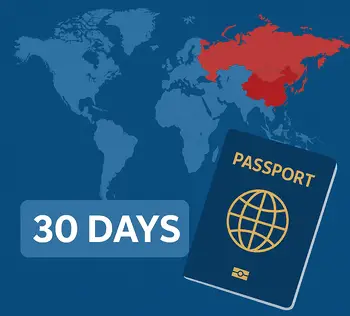
Demonstrating financial stability is a cornerstone requirement for obtaining permanent residence in China.
This guide provides detailed, up-to-date information on financial requirements across different application pathways, regional variations, and practical strategies for meeting these criteria in 2025.
Understanding Financial Requirements for China Permanent Residence
China’s permanent residence system (commonly called the “Chinese Green Card”) evaluates applicants’ financial stability to ensure they can contribute positively to the economy without becoming a burden on public resources.
These requirements vary significantly based on your application pathway and location within China.
Financial Requirements by Application Pathway
Investment-Based Pathway
| Region | Minimum Investment Required | Maintenance Period |
|---|---|---|
| Western regions/poverty alleviation counties | USD 500,000 | 3+ consecutive years |
| Central regions | USD 1 million | 3+ consecutive years |
| Eastern coastal regions | USD 2 million | 3+ consecutive years |
Additional requirements:
- Good tax payment records throughout the investment period
- Business must remain operational and compliant with regulations
- Investment must be in encouraged industries or development zones
Source: National Immigration Administration
Employment-Based Pathway
| City | Minimum Annual Salary (2025) | Minimum Annual Tax Payment | Required Duration |
|---|---|---|---|
| Shanghai | CNY 886,104 | CNY 177,221 (20% of salary) | 4 consecutive years |
| Beijing | CNY 850,000 | CNY 170,000 (20% of salary) | 4 consecutive years |
| Other tier-1 cities | CNY 600,000-800,000 | Varies by location | 4 consecutive years |
| Tier-2/3 cities | CNY 500,000-600,000 | Varies by location | 4 consecutive years |
Position requirements:
- Deputy general manager, factory deputy director or above; OR
- Professional with associate senior titles or above (associate professor, associate researcher)
Source: Shanghai Municipal Public Security Bureau
Family Reunion Pathway
| Applicant Type | Financial Requirement | Duration |
|---|---|---|
| Spouse of Chinese citizen | Stable income & housing | 5+ years of marriage |
| Dependent children | Financial support from parents | Under 18 years old |
| Elderly parents (60+) | Stable income & housing from sponsor | 5+ years residence |
Documentation needed:
- Proof of stable income (bank statements, employment contracts)
- Housing ownership certificate or rental agreement
- Sponsor’s financial capability documentation
Regional Variations in Financial Requirements
Financial requirements vary significantly across China, with tier-1 cities typically having higher thresholds:
| City Tier | Financial Threshold Difference | Special Considerations |
|---|---|---|
| Tier-1 (Beijing, Shanghai, Guangzhou, Shenzhen) | 20-30% higher than national average | Stricter verification process |
| Tier-2 (Hangzhou, Nanjing, Chengdu, etc.) | Approximately national average | Some flexibility for strategic industries |
| Tier-3 and below | 10-20% lower than national average | May offer incentives for specific sectors |
Regional incentives:
- Shanghai’s Lingang New Area offers relaxed financial requirements for tech professionals
- Hainan Free Trade Port provides special financial thresholds for tourism and service industry experts
- Greater Bay Area offers tailored financial pathways for finance and innovation professionals
Required Financial Documentation
Essential Financial Documents
| Document Type | Purpose | Authentication Requirements |
|---|---|---|
| Income tax payment certificates | Verify tax compliance | Official tax bureau stamp |
| Employment contracts | Confirm salary level | Notarized and company-sealed |
| Bank statements (36+ months) | Demonstrate financial stability | Bank-certified with official stamp |
| Investment verification reports | Confirm investment amount and duration | Certified by authorized accounting firm |
| Property ownership certificates | Prove assets in China | Notarized copies |
| Business license and annual reports | Verify business operations | Administration for Industry and Commerce certified |
Document authentication process:
- Obtain original documents from relevant institutions
- Notarize documents through authorized Chinese notary offices
- Translate all documents into Chinese through certified translators
- Submit authenticated documents to local Public Security Bureau
Application Timeline and Financial Verification Process
| Stage | Duration | Financial Verification Steps |
|---|---|---|
| Pre-application preparation | 3-6 months | Gather and authenticate all financial documents |
| Initial consultation | 1-2 weeks | Preliminary review of financial qualifications |
| Document submission | 1 day | Submit all financial documentation |
| Financial verification | 2-3 months | Authorities verify income, tax, and asset claims |
| Final review | 3-6 months | Comprehensive evaluation of financial stability |
| Decision | 1-2 weeks | Approval or rejection based on financial criteria |
Note: Total processing time typically ranges from 6-12 months
Common Financial Documentation Challenges and Solutions
| Challenge | Solution | Expert Tip |
|---|---|---|
| International income verification | Provide authenticated bank transfers and foreign tax records | Work with a cross-border financial advisor |
| Meeting minimum tax thresholds | Ensure proper tax planning at least 4 years before application | Consult with a Chinese tax specialist |
| Investment proof authentication | Obtain capital verification reports from authorized Chinese firms | Use Big Four accounting firms for verification |
| Currency conversion documentation | Maintain detailed records of all foreign exchange transactions | Use official channels for all currency exchanges |
| Demonstrating continuous financial stability | Avoid gaps in employment or income | Maintain consistent banking relationships |
Maintaining Financial Requirements After Approval
Permanent residence status can be revoked if financial conditions change significantly:
- Maintain minimum residence in China (at least 3 months annually)
- Continue tax compliance if residing in China
- Report significant changes in financial status to authorities
- Renewal typically requires proof of ongoing financial stability
Case Study: Successful Employment-Based Application
Applicant Profile:
- Senior software engineer at multinational tech company
- Annual salary: CNY 950,000
- Annual tax payment: CNY 190,000
- Duration in China: 5 consecutive years
- Location: Shanghai
Key Success Factors:
- Salary exceeded minimum threshold by 7.2%
- Consistent tax payment record with no gaps
- Employment with a Fortune 500 company in strategic sector
- Residence in high-tech development zone
- Complete financial documentation with proper authentication
Expert Tips for Financial Preparation
- Start Early: Begin financial planning at least 4 years before application
- Maintain Detailed Records: Keep comprehensive documentation of all income, taxes, and investments
- Consult Specialists: Work with immigration and tax professionals familiar with Chinese permanent residence requirements
- Regional Research: Investigate specific financial requirements for your target city
- Consider Strategic Industries: Financial thresholds may be lower for professionals in China’s priority sectors
Recent Policy Changes Affecting Financial Requirements
The 2023-2025 period has seen several important changes:
- Introduction of the “Five-star Card” system with enhanced verification procedures
- Post-COVID adjustments increasing minimum financial thresholds
- Greater emphasis on tax contribution history
- More favorable treatment for professionals in strategic emerging industries
- Streamlined verification for graduates from top global universities
Conclusion
Financial stability remains a cornerstone requirement for obtaining permanent residence in China.
By understanding the specific thresholds for your application pathway and region, preparing comprehensive documentation, and maintaining consistent financial records, you can significantly improve your chances of success.
For the most current information, always consult with the local Public Security Bureau’s Exit-Entry Administration Department in your region, as requirements continue to evolve with China’s immigration policies.


